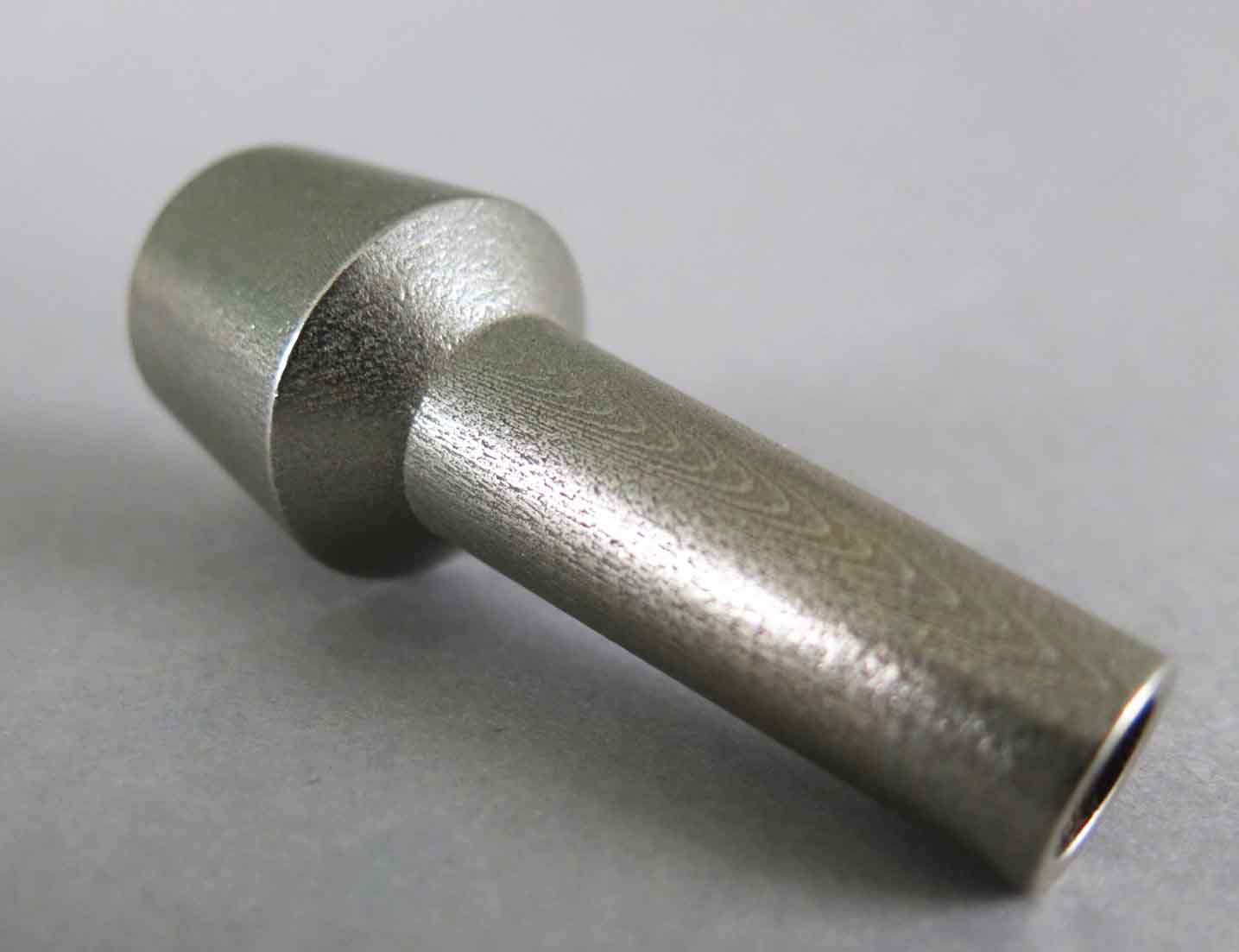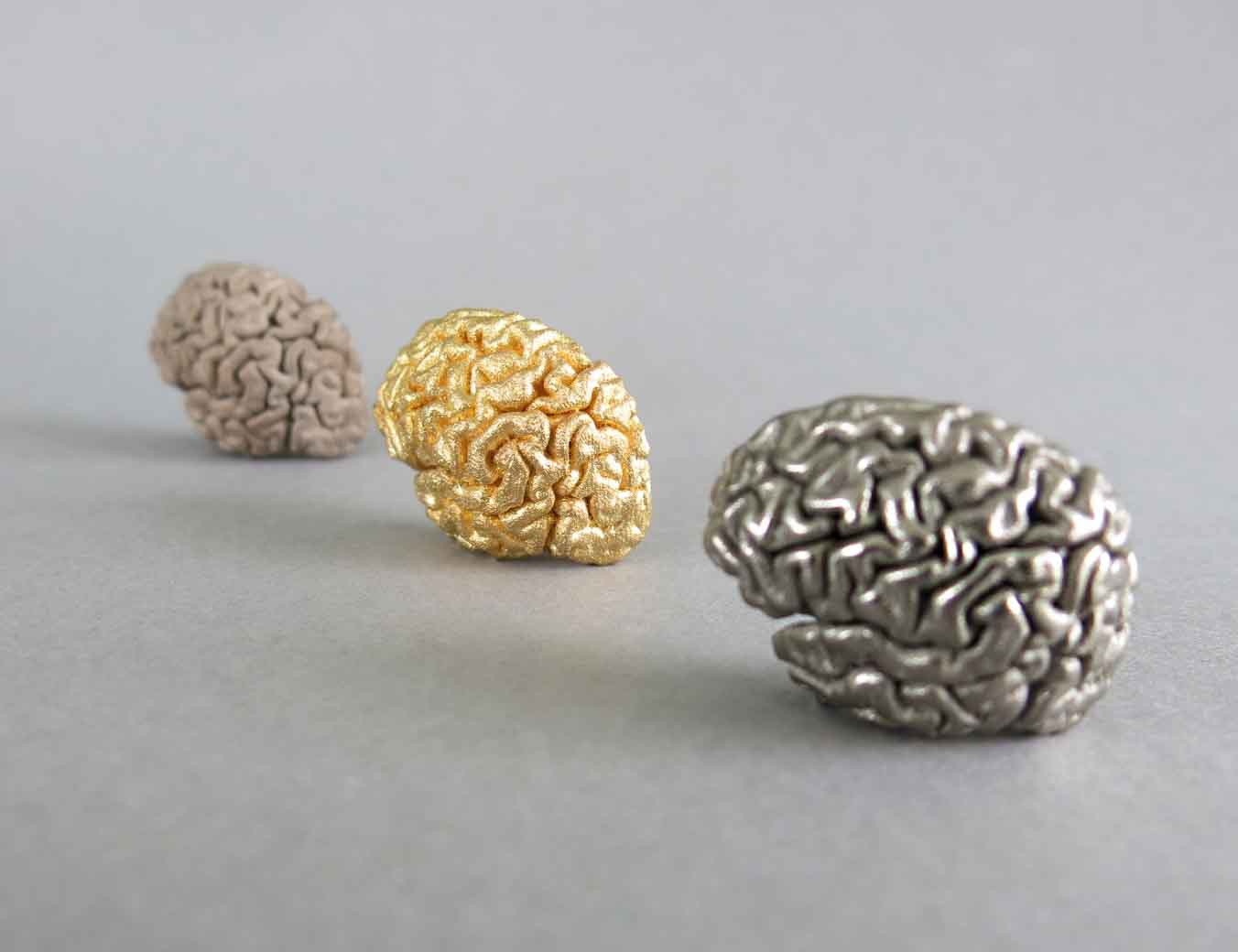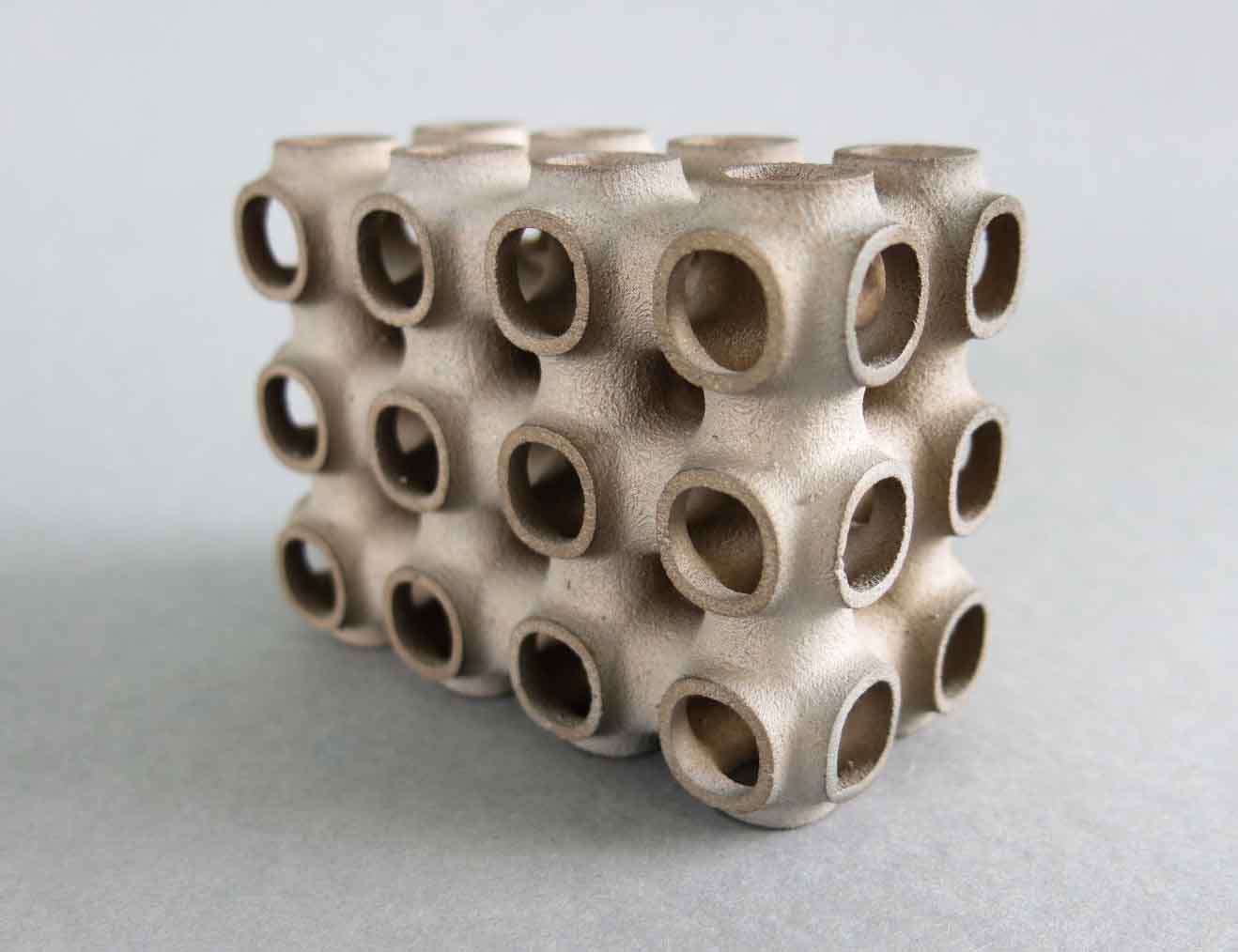Q&A on Stainless Steel Metal Binder Jetting
Posted By Eole Recrosio on Jun 5, 2017 | 0 comments
Few weeks ago, we released our new binder jetting stainless steel material for 3D printing. It was a great success and generated a lot of enthusiasm among our customers. In this series of questions, discover all you need to know about this very interesting metal material and how to use it properly!
What is binder jetting?
Binder jetting is one of the technologies used to create stainless steel parts. The technology relies on the combination of a powder material, a binding agent and a curing process. Each layer is created from the powder selectively fused by the binding agent. At the end of the process, the part is placed into an isostatic furnace to be solidified. Moreover, binder jetting stainless steel is infiltrated with bronze to add strength to the final part.
How does the infiltration process work?
To add strength to your object, we apply an infiltration process to your parts. When the object is 3D printed, it is placed onto stainless steel runners into a crucible. Then, we drop bronze powder on a side and stainless steel powder everywhere else. The container is then placed into a pressurized furnace. During the process, the bronze powder melts and infiltrates the part through the runners. At the end, the part is removed from the runners and ready for post process.
What is Stainless Steel?
This material is composed of a fine stainless steel powder (later infiltrated with bronze powder). The grade of our stainless steel is SS420 which means that it is an alloy composed from high-carbon and chromium. It is one of the hardest stainless steel alloys and has an excellent resistance to corrosion and rust.
What does binder jetting stainless steel look like?
The stainless steel 3D printed with binder jetting has a light brown granular surface. The color is due to the infiltration process because the part is composed of 60% of stainless steel and 40% of bronze.
In most cases, the surface aspect is already satisfying, but it is possible to apply specific finishes to obtain a shiny and polished surface.
Nickel plated polished part
Which company created our Binder Jetting Stainless Steel?
To create your parts in binder jetting stainless steel, we are using the M-Flex printer from the company ExOne which created the metal binder jetting process.
For what parts is binder jetting stainless steel used for?
First, you need to evaluate if your part is worth using metal 3D printing or not. To help you make that choice, we created Business Case, which is part of our AMT (Agile Manufacturing Technology) software suite. This tool is the first metal 3D printing AI that helps you evaluate in seconds your project. You can try it for free on this page.
Metal 3D printing has a many advantages such as:
- Speed
- Reduced assembly time
- Topology
- Optimization and weight reduction
- Short runs
- Mass customization
- Remote production
To go even further with metal 3D printing, our team is developing the Agile Manufacturing Technology (AMT) suite with dedicated tools to help you analyse, optimize and produce your metal parts easily. You can learn more about it on this page.
Binder jetting stainless steel is not as resistant as other 3D printing metals but it can be used for small technical parts and engineering components if technical specifications are respected. This material has average mechanical properties but it is not fitted for receiving a lot of loads and stresses. We recommend you to take a look at our other metal 3D printing materials on this page.
Stainless steel binder jetting is perfectly fitted for ornamental and decorative objects. It is also particularly interesting for jewelry thanks to plating options.
How precise is binder jetting stainless steel?
Today, we can achieve a minimum layer thickness of 100 µm. As a comparison, it is just the same as our 3D printed polyamide in SLS.
What kind of finishes can you choose for binder jetting stainless steel parts?
For your parts in binder jetting stainless steel, it is possible to obtain multiple surface finishes to get the expected aspect.
We can apply a polishing option to smooth and give a shiny aspect to the surface of the object. This mechanical post-process is ideal to give a better aspect to your part. However on rounded surfaces, the layers can be still visible even with the polishing finish.
From left to right : Raw, gold plated and nickel plated unpolished
We can also apply a plating finish to the object 3D printed in binder jetting stainless steel. For now, we can apply 24 karat gold plating and nickel plating. Note that this option can be combined with the polishing finish but can also be done separately.
This plating option allows to create beautiful parts for jewelry or ornaments.
What size must binder jetting stainless steel objects respect?
Raw binder jetting stainless steel part
The maximum size of a 3D printed object is limited by the physical size of our 3D printers and finishing tanks. It means that nothing can be printed larger than the printer bed.
For our binder jetting stainless steel, the maximum size for raw objects is 736.6 X 381 X 361.95 mm.
For the polished finish, the maximum size is 152.4 x 152.4 x 152.4 mm and 177.8 x 177.8 x 177.8 mm for the plated but unpolished version.
How should I prepare my file for a 3D Print in Binder Jetting Stainless Steel?
Preparing a file for 3D printing can be tricky and require some practice and design guidelines to obtain a proper part. To help you design for binder jetting stainless steel, follow our design guidelines on the material pages. You can also take a look at our 3D printing tutorials to help you prepare your file.
Which kind of parts can’t be 3D printed using Binder Jetting Stainless Steel?
Our partner Exone demands a strict policy regarding the parts that we produce – in addition to our terms, we kindly remind you that none of these kinds of items can be 3D printed using Binder Jetting materials:
– Any file that would constitute a firearm
– Models that would aid in breaking the law
– Any religious content
– Any sexual content, especially any content that exploits child sexuality
Which other techniques can I use to 3D Print Stainless Steel?
At Sculpteo, we offer a large variety of material for our online metal 3D printing service. If you wish to 3D print in stainless steel with another technique, you can take a look at the DMLS technology.
We offer many metal materials such as titanium, aluminum but also brass and sterling silver thanks to the metal casting technique. You can discover more on our 3D printing metals on this page.
To increase your metal 3D printing knowledge, please take a look at our free Guide to metal 3D printing available on this page.
If you liked this article, please feel free to leave a comment and to share it on Facebook, Twitter and Linkedin


 Connect with Google
Connect with Google Connect with Facebook
Connect with Facebook


